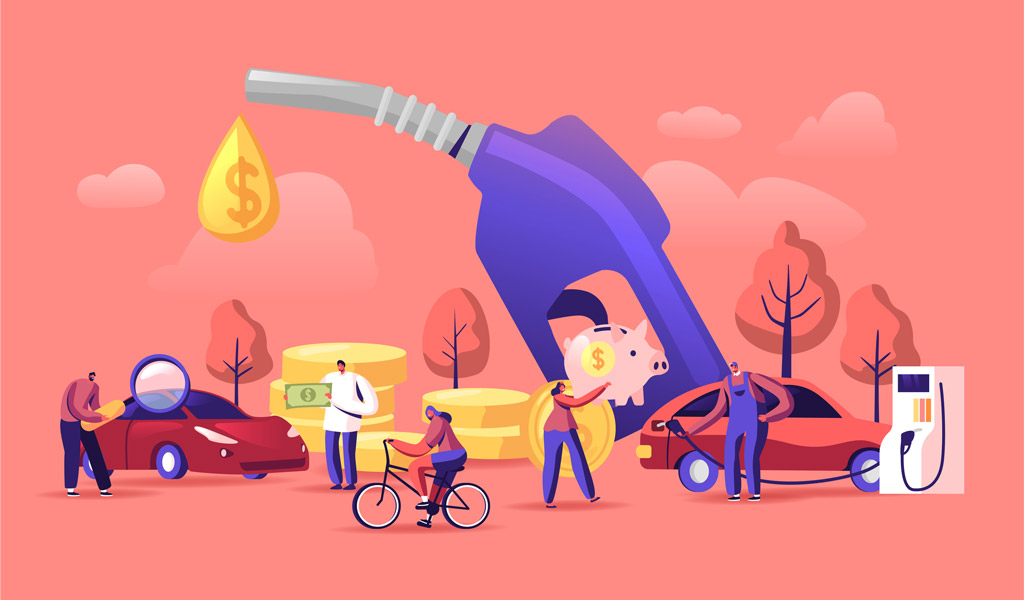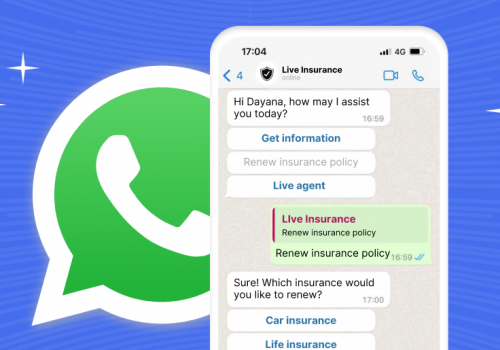Delighting Customers. Competition is extremely high in the auto industry. While other industries can afford to miss a sale and work harder to entice that customer back in the future, the consequences of a missed sale in the auto industry are much greater. Consumers have so many options when it comes to what car to buy, but they will only buy one car maybe once or twice a decade. This means that every aspect of the customer experience must be designed to meet the consumer’s needs and convert them into a customer.
Improving customer experience is one way that auto dealers can get ahead of the competition. Buying a car is something that people take very seriously. After all, they need to drive this car every day. They have to trust that this car will meet all of their needs, whether they like to drive to the shops or go biking in the mountains. They also have to trust that this car is safe and comfortable. Trust doesn’t just start when the consumer sits in the car for the first time or takes it for a test drive. It starts when they first interact with your business. The experiences they have with your company will shape how they feel about the product, and whether they proceed with buying it. This is why improving customer experience is so important.
Delighting customers is about creating a wow factor that leaves them feeling in awe about their experience. It’s about creating positive memories so that your product stands out in their mind and they become one step closer to choosing your car over competitors.
This is what we’re focusing on today! The best practices in the auto industry for improving customer experience and delighting customers. Let’s take a look.

Shape Experiences Around the Customer Journey
The customer buying journey is the sequence of steps that the customer moves through as they get one step closer to buying the product. Tailoring your buyer journey is always a good idea because it ensures that you are customer-focused every step of the way. As people move through the buyer journey, they encounter different events or experiences that might dissuade or persuade them to buy your product. The goal is to keep as many customers as possible moving through the several steps of the buying process until they eventually buy a product.
While the buying journey is important for all businesses selling any product, it’s particularly important for businesses that sell expensive products infrequently. Most people will buy a new car every 4 to 8 years. For the customer, this puts a lot of pressure on them to make the right decision. For the automotive industry, this means that car manufacturers and car dealers have to compete more aggressively to secure that sale. If you miss the opportunity, then you won’t have that opportunity again with that customer for several years.
The buyer journey is broken down into three stages.
- Awareness – This is when the customer becomes aware of your product concerning their wants or needs. For example, their current car might have stopped working or is costing a lot of money to maintain.
- Consideration – The customer is now aware of their problem and is now looking for specific solutions to fix it.
- Decision – The customer knows how to fix the problem (they have found a solution), but they are weighing up their options. In this stage, they will decide which company can best fulfill their needs.
To tailor your customer experiences to match the buyer journey, you need to create experiences at each point in the journey.
- CX in awareness – What problems do your vehicles or services solve? Do you offer hyper luxury that will appeal to customers who want a step up in luxury? Are your cars highly reliable? Good for families? Whatever it is, you need to advertise these qualities in several places to capture the attention of customers in the awareness stage.
- CX in consideration – Your target customers will now be considering which option is the best for them. Engage these customers by creating helpful articles and videos that answer their questions.
- CX in decision – Explain why your product or service is the best option. You can do this by showcasing your reviews and testimonials, and always being available to talk to the customer.
Re-engage Customers
If you have a customer who bought a car from you 4, 5, or 6 years ago, then they might be looking at buying a new car. It’s a good idea to re-engage these customers by sending them personalized marketing. Technology is your friend here. With AI, automation, and data science, you can drill into the stats and find the best time to re-engage your customers. It won’t be the same for every type of customer.
For example, you might find that customers who buy a certain brand of a car are less likely to want to replace it after 3 years. Equally, you might find that customers who buy certain brands will want a new car in a shorter period of time. This can be for several reasons and usually comes down to why the customer wants the car in the first place (what type of buyer they are). This is something we’ll delve further into in later sections.
Here are our top tips for re-engaging customers in the auto industry:
- Utilize personalized emails – Focus on the types of cars that this customer is interested in. If they have previously bought a 7 seater family car, they are unlikely to want to buy a 2 seater sports car as their next purchase. Emails from the auto industry have a 35% open rate on average.
- Stay in touch over the years – Send happy birthday emails.
- For customers with 0-3-year-old vehicles, send offers on trade-ins for newer vehicles. These customers likely care about having a new vehicle.
- For customers with 4-6-year-old vehicles, focus on the importance of maintaining older cars, or offer them a newer model of their car. You can also send valet offers so they can keep their car looking new.
- For customers with 7+-year-old vehicles, your marketing should focus on why it’s important to upgrade your car after this length of time. Customers in this bracket are less likely to care about luxury or having the latest tech in their car. Instead, they are more likely to care about the economic benefits of having a newer car, for example, fuel efficiency, reliability, and low maintenance costs. Tailor your marketing to match this.
Be on Social Media
According to one study, 22% of automotive internet shoppers use social media when shopping for their new vehicle. YouTube, DelerRater, and Facebook are the most popular social media sites for finding more information about cars. Another study found that a whopping 90% of shoppers use social media at some point when deciding what vehicle to buy. This means you can’t afford to not be on social media.
Help Your Customers!
This one may seem obvious, but when you dive a little deeper, it isn’t at all. One of the reasons people feel anxious about buying a new car is that they feel put off by aggressive salespeople. Many consumers believe that salespeople only care about getting a sale and will tell the customer everything they want to hear to get this sale, regardless of whether it’s true or not. This perception is extremely damaging to the brand’s reputation. Customers talk about their experience, both with the people close to them, and also online.
According to one study, walking into a car dealership is still the initial contact for over 50% of people. Many of these customers will look up reviews for the dealership before they walk in. If they find that the salespeople are extremely aggressive and try to pressure people into a sale, many people won’t walk into that dealership. The trust has been broken before they even walk in.
This is why you should reframe the role of the salesperson to focus on helping customers. The salesperson is there as a representative of the company that has a high degree of knowledge about the vehicles and services on offer. Their focus should be on finding what the customer’s problem is and coming up with an appropriate solution to the problem. The appropriate solution might not always be the one that brings in the most money, but sometimes it might be.
If you successfully help your customers, then they will keep coming back for other services, because that trust has been earned. They are also much more likely to come back to you when they want a new car. The process of buying a car can be stressful and time-consuming, so never underestimate the value of convenience for your customers. If they can go back to a company that treated them well and made the process easy, then they will do this every time.

Segment Your Customers
Your customers should be broken down into segments so you can personalize your customer experiences. This applies to marketing and personalized emails, but also one-to-one experiences with the customer. Remember that not all customers are the same. They might all want a new vehicle, but that doesn’t mean they are looking for the same things from their purchase. By segmenting your customers, you can also get ahead of the competition by knowing your customers better than they know themselves, how? Consider the following example.
Some models of cars have high first-year resale rates. These cars are:
- Mercedes-Benz C-Class (12.4 percent)
- BMW 3 Series: 11.8 percent
- Land Rover Discovery Sport (11.8 percent)
- Land Rover Range Rover Evoque (10.9 percent)
- Mini Clubman (10.7 percent)
- BMW X1 (10.4 percent)
- BMW X3 (9.0 percent)
- Nissan Versa Note (9.0 percent)
- Jaguar XF (8.8 percent)
- Nissan Versa (8.7 percent)
When you look at the statistics for resale rates per automaker, the picture looks similar, with BMWs, Mercedes, Jaguars, Nissans, and Fiats coming in high. So why are the first-year resale rates so high for these brands? It comes down to a number of factors, but they are all focused on customer expectations vs reality. Fiat has a reputation for being unreliable. Nissan has a reputation for poor customer service.
Additionally, for many buyers, this might be their first time buying a luxury car. Luxury cars are often expensive to maintain because they need specialized parts or required specialized workers to do work on their car. For customers who are buying a luxury car for the first time, they are likely buying a comparatively low-cost luxury car. It’s likely to be the cheapest version of the luxury car that they can find. This means that they get all the high costs associated with a luxury car, but only some of the luxury. This can leave many buyers feeling dissatisfied and wanting to replace the car shortly after buying it.
This is somewhat inevitable in car sales. Customers don’t always know what they want, or sometimes feel excited by something that isn’t a good fit for them. As a company, you should make them aware of the full picture. Don’t dissuade them from buying one of these cars, but be honest about some of the issues they may face. If you don’t, you risk alienating these customers.
Segments in the automotive industry can be broken down like this:
- Customers who want a second family car – For teenagers or for the other spouse. The car will need to meet the requirements of functionality and cost.
- Customers who just want a car to get them around the town.
- Environmentally conscious consumers – They are conscious of the environmental impact of their car.
- Luxury buyers – They want social status.
- Quality – They want technically advanced cars but care more about quality than features. They would buy a higher quality (better made) car with fewer features than a cheaper car.
- Off-roaders – They want a car to match their specific and unique needs. Functionality is extremely important.




















